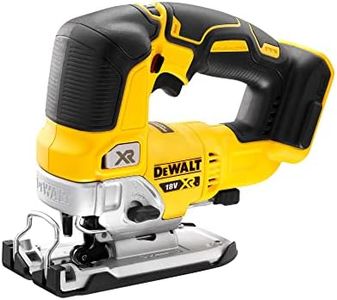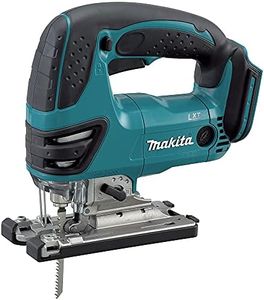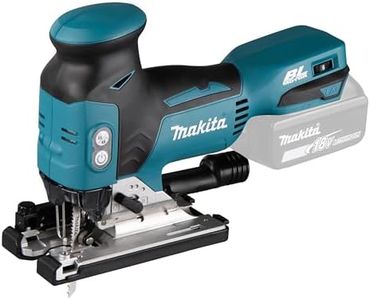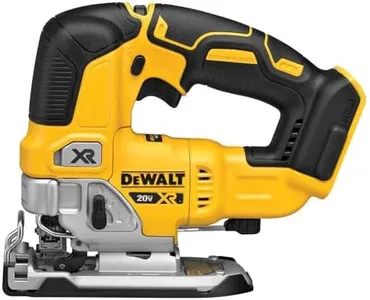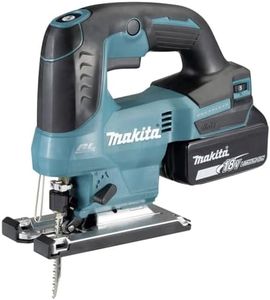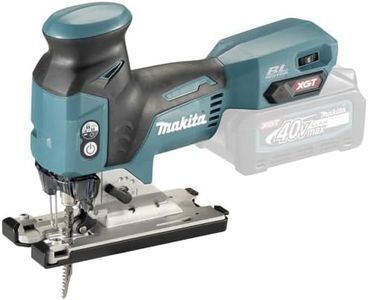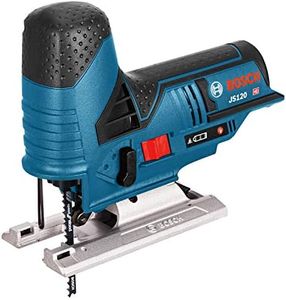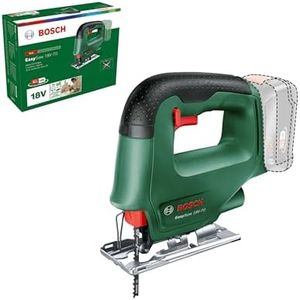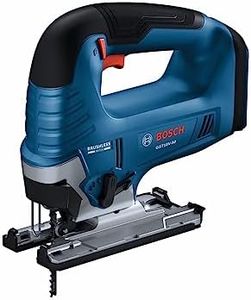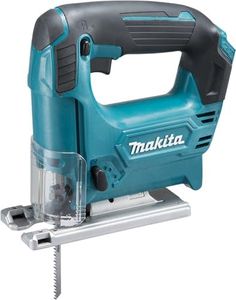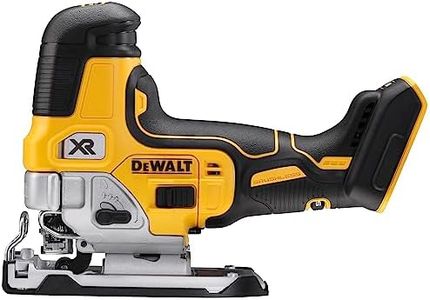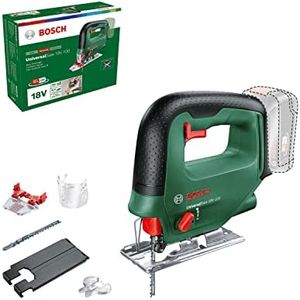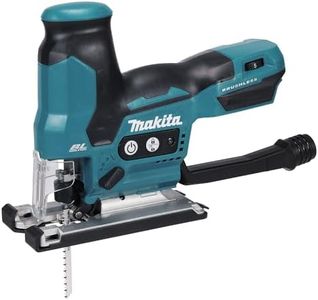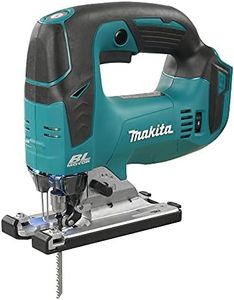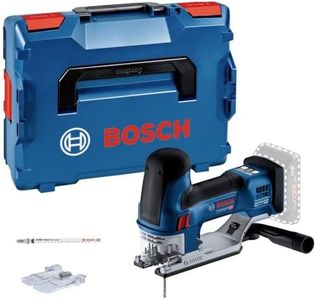We Use CookiesWe use cookies to enhance the security, performance,
functionality and for analytical and promotional activities. By continuing to browse this site you
are agreeing to our privacy policy
10 Best Cordless Jigsaw
From leading brands and best sellers available on the web.Buying Guide for the Best Cordless Jigsaw
Choosing a cordless jigsaw can be confusing because there are so many models, each with different features and capabilities. The key to finding the right tool is thinking about what types of projects you'll be using it for, and matching the features to your needs. Cordless jigsaws offer the convenience of working anywhere, but that also means you have to pay attention to things like power, battery life, and versatility.Battery VoltageBattery voltage tells you how powerful the tool is. Higher voltage typically gives you more cutting power and speed, which is important if you plan to cut thick or tough materials. You’ll usually find jigsaws ranging between 12V and 20V. Lower voltage (12V-14V) is lighter and best for light tasks, while higher voltage (18V-20V) is heavier but suitable for demanding jobs. Match the voltage to the type of projects you’ll tackle most—casual DIY and crafts can go lower, but bigger construction or renovation tasks may need something stronger.
Stroke LengthStroke length is how far the blade moves up and down on each cycle. A longer stroke means the tool can cut faster and handle thicker materials more easily. Jigsaws generally have a stroke length between 0.5 and 1 inch; short strokes are great for precision and fine work, while longer strokes are better for speed and heavy materials. If you do a lot of detail work, a shorter stroke will make it easier to control, but for straight, long cuts in tougher material, a longer stroke saves time.
Orbital ActionOrbital action refers to the extra movement the blade makes in addition to going up and down—it moves slightly forward on the upward stroke and back on the downward stroke. This makes cutting through wood faster and less likely to bog down. Higher-end jigsaws usually offer different orbital settings. Use less orbital action for precise or curved cuts and turn it up for fast, rough straight cuts. Choosing a jigsaw with adjustable orbital action gives you lots of flexibility depending on your projects.
Blade Change SystemThis feature determines how easy it is to swap out blades when you want to cut different materials. Some jigsaws require tools like a screwdriver, while others have a tool-free system so you can change blades quickly by hand. Tool-free blade change is much more convenient, especially if you switch blades often or don’t want to fuss with extra tools. If you expect to cut wood, metal, and other materials in the same project, this feature will save you hassle.
Cutting CapacityCutting capacity tells you how thick a piece of material the jigsaw can handle. This will be listed separately for wood, metal, and sometimes plastic. If you regularly cut thick boards, shelving, or pipe, you need a higher cutting capacity. For crafts, trim, or other thin materials, lower capacity is fine. Always check your typical project needs so you aren’t limited by your tool later.
Speed ControlSpeed control lets you adjust how fast the blade moves. This is often shown as strokes per minute (SPM). Adjustable speed is useful because different materials and cuts need different speeds: slow for metals and tricky curves, faster for soft wood and long straight cuts. A jigsaw with variable speed gives you much better control for a range of jobs. If you think you'll tackle lots of different materials, consider this a must-have.
Weight and ErgonomicsSince cordless jigsaws have the battery built in, the weight can vary. Heavier jigsaws are harder to control for long periods but can sometimes be more stable for straight cuts. Lighter ones are easier to handle, especially overhead or for intricate shapes. Also, look for a handle that feels comfortable in your hand and doesn’t cause strain. Think about how you work: if you’ll use the saw often and for long time, prioritize comfort and manageable weight.
Dust Blower or ExtractionSome jigsaws come with a dust blower that clears sawdust from your cutting line so you can see better, or they might have a port to connect a vacuum for dust extraction. This is especially useful when working indoors or making long, precise cuts where visibility matters. If you work with a lot of wood or value a clean workspace, consider a model with one or both of these features.
